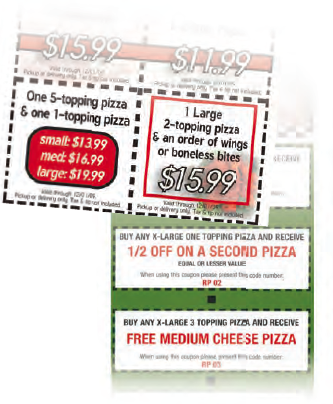 Marketing without measurement equals waste! Over the past few weeks, my visits to restaurants included asking simply how they track the benefits of using coupons, such as two-for-one or “buy one get one free” offers. Without exception, there was never a system in place to measure the profits or increased food costs derived from the customer visits generated from the dollars spent to bring them to the restaurant. For example, when a customer visited the restaurant after the dollars had been spent via a local telephone directory, newspaper or magazine to promote the restaurant, the restaurateur did not have any way to analyze the hidden costs involved in that sale.
Marketing without measurement equals waste! Over the past few weeks, my visits to restaurants included asking simply how they track the benefits of using coupons, such as two-for-one or “buy one get one free” offers. Without exception, there was never a system in place to measure the profits or increased food costs derived from the customer visits generated from the dollars spent to bring them to the restaurant. For example, when a customer visited the restaurant after the dollars had been spent via a local telephone directory, newspaper or magazine to promote the restaurant, the restaurateur did not have any way to analyze the hidden costs involved in that sale.
Increased Food Costs: If you’re not using portion control methods and procedures for preparation of your pies, be careful when blanketing your customer base with coupons such as two-for-one or “buy one get one free.” For example, if your actual food costs are running close to 50% due to excessive toppings, especially if you’re not limiting the toppings in your coupon offer, you could be losing money on your coupon with respect to food costs alone. Therefore, it’s important to be very specific in your coupon offer.
Do the math. Calculate your food, labor and overhead burden costs specifically related to the menu item being promoted in a coupon offer. Consider also requiring the purchase of a large drink, which normally has a high profit margin. For instance, a large soda at $1.99 may have a gross margin of 75%, considering the cost of the cup and its beverage contents. Therefore, adding the gross profit of roughly $1.50 to a two-for-one promotion of a pie, which alone would lose money, through this combination the total monies received should exceed the menu item costs.
Take the time to cost out each menu item that you plan to use in a coupon offer. This will amount to a fully burdened cost, including estimated labor and overhead in addition to the food costs. Ensure your coupon offer is specific to a menu item that has adequate gross profit to at least break even per menu item sold, or combined in the offer. Some guidance in this area starts with having the procedures to not only track the results of your marketing—customers redeeming the offer—but accounting for the costs as well.
Increased Marketing Costs: As much time as you will spend on designing your marketing pieces, including coupons, radio, ads or other print media, you need to be visualizing and creating customers’ experiences when they arrive at your restaurant for the first time from interest generated through your campaign. For example, most point of sale systems have a database function to enter customer information, usually via telephone numbers associated with names. This information can be stored for future marketing campaigns and converted into real-time electronic notices of restaurant specials during off-peak hours. Create a system to track repeat visits of customers who redeemed your coupon offer. The fi rst step is to account for the entire cost incurred for a marketing program. As the customers visit the restaurant, their purchasing history is stored in a database. At the end of a 30-, 60- or 90-day period, you can compare the gross profit from all of these new customers versus the original expenditures for the marketing program. You now have some data and trends to work with for future marketing programs in different areas of your pizzeria’s vicinity.
I have witnessed many restaurants generate a “Welcome to [restaurant name]” card that is handed out by the waitstaff immediately as they seat the customer. This card can also be pointed out if it resides in a holder on the table for the customer to read and complete during his visit, and should have an incentive attached for a future visit. In addition, the card needs to include an opt-in section, giving the restaurant permission to contact the customer via electronic means—email, text, Facebook or Twitter—to notify the customer of daily specials or limited-time offers.
In addition to providing exceptional customer service, your restaurant culture needs to adopt a customer database mentality when promoting a coupon campaign. How can I contact the customer to thank him for his visit? How can I remember customers’ names to personalize their visits? How can I reward my customers for being loyal? Capture the hidden profit and track the increased costs in utilizing coupons. Any marketing campaign should be designed for short-term profits through immediate customer visits, as well as generate long-term relationships via personal contact through a customer database that works to promote your restaurant experience.














